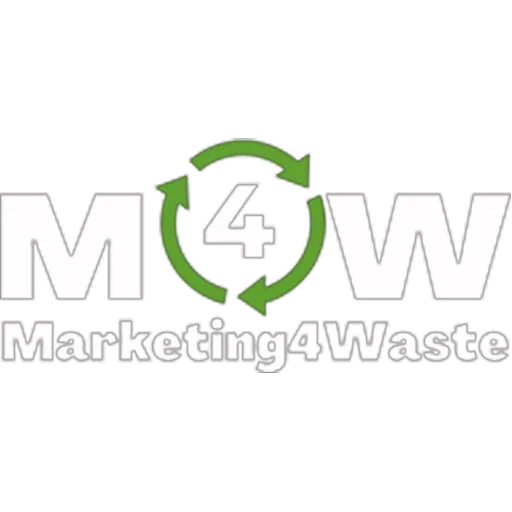Increase the Revenues of Your Waste Company With the Tips Shared in Our Blog Articles

Team Alignment: Why Your Team Should Be Aligned With Your Mission and What You Are Risking If It’s Not
In the competitive landscape of waste management, your company's success hinges not just on the efficiency of your operations but also on the alignment of your team with your mission.
As the Waste Management Alchemist, Sam Barrili, I'm here to explain why team alignment is crucial and what you risk if it's not in place. This article will serve as a comprehensive guide for waste management company owners and managers, helping you navigate the complexities of team dynamics to ensure your business thrives.
The Importance of Team Alignment
What Does Team Alignment Mean?
Team alignment occurs when all members of your organization understand, support, and work towards your company’s mission and goals. It means that everyone, from the top executives to the frontline workers, is on the same page regarding what needs to be achieved and how to achieve it.
Why Is It Crucial?
For waste management companies, particularly those focused on the collection of commercial and industrial waste, the stakes are high. Here’s why alignment is crucial:
1. Operational Efficiency: In the waste management industry, time is money. Aligned teams streamline operations, reduce redundancies, and ensure that resources are used optimally.
2. Customer Satisfaction: Consistent and reliable service is the cornerstone of customer loyalty. Aligned teams deliver on promises, ensuring high customer satisfaction.
3. Workplace Safety: In an industry rife with potential hazards, clear communication, and cohesive teamwork are vital for maintaining safety standards.
The Risks of Misalignment
Misalignment within your team can lead to several detrimental effects. Let’s delve into the most impactful problems and how they manifest in a waste management context.
1. Reduced Productivity
Operational Delays and Increased Costs
Misalignment can cause significant delays in your operations. For instance, if your dispatch team and drivers are not on the same page about route changes, you might experience missed pickups or inefficient routes that waste time and fuel. This not only impacts your bottom line but can also erode the trust your clients have in your service.
Resource Mismanagement
Without a unified approach, the efficient utilization of trucks and equipment can falter. Misaligned teams may underutilize or overuse resources, increasing maintenance costs and downtime. This inefficiency can severely hamper your ability to scale and maintain profitability.
2. Customer Dissatisfaction
Service Failures and Negative Reputation
Customer satisfaction is paramount in the waste management industry. Misalignment can lead to service inconsistencies, such as missed collections or improper waste handling. These failures can quickly damage your reputation, leading to lost contracts and difficulties in acquiring new clients.
Contract Terminations
Commercial and industrial clients often have strict service level agreements. Failing to meet these due to team misalignment can result in penalties or contract terminations, directly impacting your revenue and growth potential.
3. Increased Conflict and Tension
Workplace Morale and Safety
High levels of conflict and tension can diminish overall job satisfaction, leading to higher turnover rates and increased recruitment costs. Moreover, in an industry where physical labor and heavy machinery are involved, miscommunication and conflict can lead to accidents and safety incidents, posing severe risks to your workforce.
Team Cohesion
A fragmented team struggles to work together effectively, further exacerbating operational inefficiencies and service issues. This lack of cohesion can prevent your company from responding agilely to market changes and client needs.
Strategies for Achieving Team Alignment
Achieving team alignment is not an overnight process, but with strategic planning and execution, it is attainable. Here’s how you can align your team with your mission and goals effectively.
1. Clear Communication
Implement Robust Communication Tools
Invest in communication tools and platforms that facilitate real-time information sharing. Tools like Slack, Zoom, Teams, and more, combined with specialized route management software, can ensure that everyone is updated on changes and critical information is disseminated quickly.
Establish Communication Protocols
Develop and enforce communication protocols that standardize information flow within the organization. Regular meetings, updates, and feedback loops are essential to keep everyone on the same page.
2. Defined Roles and Responsibilities
Clarify Job Descriptions
Ensure that every team member knows their specific roles and responsibilities. Clear role definitions prevent overlap and ensure accountability.
Cross-Training
Cross-train employees to understand different aspects of the operation. This enhances flexibility and fosters appreciation for each other’s roles, promoting teamwork.
3. Regular Training and Development
Continuous Learning
Conduct regular training sessions to update your team on the latest industry practices, safety protocols, and company policies. This continuous learning approach ensures that your team remains competent and aligned with industry standards.
Team-Building Activities
Organize team-building activities that foster trust and collaboration. These activities can break down silos and encourage a more cohesive working environment.
4. Customer Feedback Mechanisms
Solicit Feedback Regularly
Establish strong channels for collecting customer feedback regularly. Use surveys, follow-up calls, and customer service portals to gather insights on your services' performance and where improvements are needed. Make it easy for customers to provide feedback by offering multiple avenues to share their experiences.
Act on Feedback
Collecting feedback is not enough; acting on it is crucial. Analyze the feedback to identify common themes and areas needing improvement. Develop action plans to address these issues and communicate the changes to your team. This helps improve your service and shows your clients that you value their input and are committed to continuous improvement.
Close the Loop
After implementing changes based on feedback, follow up with your customers to inform them of the actions taken. This “closing the loop” process demonstrates transparency and accountability, further building trust and loyalty among your clientele.
Implementing a Culture of Alignment
To ensure long-term alignment, embed it into your organization’s culture is essential. Here are some strategies to foster a culture of alignment:
1. Leadership Commitment
Lead by Example
As a company owner or manager, your commitment to the organization's mission and goals should be evident in your actions. Lead by example and demonstrate the behaviors and attitudes you expect from your team.
Transparent Decision-Making
Adopt a transparent approach to decision-making. Involve team members in discussions and decisions that affect them. This inclusion fosters a sense of ownership and alignment with the company’s objectives.
2. Mission and Vision Clarity
Communicate Your Mission
Communicate your company’s mission, vision, and values to your team regularly. Ensure that these are not just words on a wall but guiding principles that shape everyday actions and decisions.
Align Goals
Set clear, measurable goals that align with your company’s mission. Ensure that every team and individual’s objectives are linked to these overarching goals, creating a unified direction for the organization.
3. Recognize and Reward
Acknowledge Achievements
Recognize and reward employees who regularly align with the company’s mission and values. Whether through formal awards, bonuses, or simple acknowledgments, recognizing these behaviors reinforces their importance.
Provide Feedback
Offer constructive feedback to help employees understand how their actions contribute to or detract from the company’s goals. This ongoing feedback loop helps maintain alignment and address issues before they escalate.
The Long-Term Benefits of Team Alignment
When your team is aligned with your mission, the benefits extend beyond immediate operational improvements. Here’s what you can expect in the long term:
1. Enhanced Innovation
Aligned teams are more likely to collaborate effectively, leading to innovative solutions and improvements. When everyone understands and supports the company’s goals, they are more willing to share ideas and take initiative.
2. Stronger Customer Relationships
Consistency in service quality and responsiveness builds stronger relationships with your clients. Aligned teams are better equipped to meet customer expectations, leading to higher satisfaction and retention rates.
3. Sustainable Growth
Your company is well-positioned for sustainable growth with reduced inefficiencies, higher employee morale, and stronger customer loyalty. Aligned teams can adapt more quickly to market changes and confidently pursue new opportunities.
In the waste management industry, where operational efficiency and customer satisfaction are paramount, team alignment is not just a nice-to-have; it’s a critical success factor.
Ensuring that your team is aligned with your mission can mitigate risks, enhance productivity, and build a resilient organization capable of thriving in a competitive market.
As the Waste Management Alchemist, I urge you to take a proactive approach to team alignment. Invest in communication, training, and feedback mechanisms, and foster a culture that prioritizes alignment with your mission.
The immediate and long-term rewards will be well worth the effort.
Following these guidelines, you can transform your waste management company into a cohesive, efficient, and customer-focused powerhouse ready to tackle today's challenges and tomorrow's opportunities.
To your success
Sam
The Waste Management Alchemist


© 2026 Marketing4waste - All Rights Reserved,
Marketing4Waste is a brand of MiM MarketingInterimManagers LLC
+1 801 804 5730

